Beschrijving
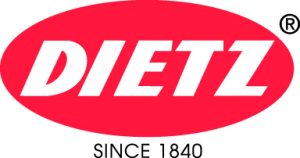
- Hoed je voor vervalsingen
- Koop alleen de echte Dietz,
- Gebruik alleen de echte reserve onderdelen.
- Een namaak kan vaak een hele dure koop zijn
Permission for use of this tekst granted to us by :
Crownplace Brands . http://crownplacebrands.com/?page_id=61
Dietz: The Greatest Lantern Invented
For nearly 200 years, Dietz has been the standard bearer of lanterns.
Dietz quality – From the early days of R.E. Dietz to today, quality has been built into every Dietz lantern. In the 1800’s, Dietz was one of the first manufacturers in the USA to use steam machinery. Today, their highly automated plant is more modern than any other lantern company in China. They use heavier materials and build to closer tolerances than competing lanterns. R.E. Dietz produces consistent quality consistently.
Dietz safety – R.E. Dietz understands better than anyone the danger of combining open flame and flammable fluids. The Dietz tradition of safety goes back 170 years, and their lamps and lanterns are used safely every day in millions of homes and businesses all over the world.
Dietz durability – In today’s electrified world, most people never reach for a Dietz lantern unless they are in a dire situation. R.E. Dietz knows their lanterns have to perform every time, regardless of the situation. Whether you are in the African bush, Australian outback, facing down a Gulf hurricane or just dealing with another urban power failure, Dietz lanterns can light your world reliably and without fail.
Dietz efficiency – R.E. Dietz earned its stripes providing thousands of lights to massive commercial operations. They provided kerosene signal lights to America’s railroads, safety lamps on America’s streets and helped build the Panama Canal. When a commercial enterprise like the federal government or national railway buys thousands of lamps, every penny of operating cost counts. Dietz lanterns use patented airflow systems to wrest the most light possible from every molecule of lamp oil.
Dietz performance – R.E. Dietz made the first wind-proof lantern on the market. Today, every Dietz lantern stays lit no matter what the weather. You can swing it, hang it from moving vehicles or carry it into the teeth of a blizzard. Dietz lanterns won’t blow out.
Dietz simplicity – Except in Africa and other parts of the developing world, where Dietz lanterns are used nightly, most Dietz lanterns are only used for camping and emergencies. When the chips are down and your world goes dark without warning, you don’t want to have to reach for an owner’s manual, fumble with pumps or complex valve or worry about broken mantles. If you can find a match, you can light a Dietz lantern. It takes just 10 seconds and four simple steps: Raise the globe, light the wick, lower the globe and adjust the flame.
Dietz History
Robert E Dietz at about the time he founded R.E. Dietz
On a warm summer day 171 years ago, a young man named Robert Edwin Dietz gave up his job at a hardware store in New York to buy a struggling lamp company. He had been experimenting with lamps since he was a teenager, trying to figure out how to make them brighter. Now, at the ripe old age of 22, he was ready to put his ideas into practice. He was a true entrepreneur with a dream and the guts to pursue it.
By the end of his first year in business, he had saved up $600 (about $14,000 in today’s dollars). By the end of the second year, he decided he was busy enough to take on a partner, his older brother William. In 1845, their fledgling company made the jump from simple candle lanterns to more complicated lanterns that burned sperm whale oil.
The next 15 years brought him many personal and business successes. He married in 1846 and had two daughters and five sons. His lanterns often featured improved designs, and he expanded his line to include fancy chandeliers. His lights were used at the New York premier of world famous opera singer, Jenny Lind.
Jenny Lind sings in a concert hall lit by Dietz chandeliers
In 1857, Dietz & Company continued its innovating ways by patenting the first flat-wick burner capable of burning kerosene. Their design was the precursor of every kerosene lamp burner in use today. And, they were making the leap from whale oil to less expensive and more practical coal oil (a close cousin of modern day kerosene).
The Dietz patent’s claim to fame was improved air flow in the lantern, which they said would produce a brighter flame with less flickering. The idea that improving air flow could improve the quality of the light became central to many of their innovations. And this innovation came at just the right time. In 1859, Edwin Drake found oil in Pennsylvania and inexpensive coal oil became affordable to America’s growing middle class.
Fueled by success, they soon opened their first international office, in London. During the Gold Rush, they opened a sales office in San Francisco, earning a place in American history. To this day, nearly every movie about the Wild West shows Dietz lanterns in use (although often the wrong model for the time period being depicted). Dietz lanterns exist in practically every mine, ranch and farm across our country.
Drawing from the Dietz patent application. This burner was the first flat wick lamp burner in America.
Dietz was a true family business, as Robert Dietz first hired then partnered with each of his four brothers, William, Samuel, James and Michael. But, it appears that all was not well in the family partnership. In 1868, Robert sold his share of the company at a loss to his brother James and immediately started a new lamp company, which would eventually become the R.E Dietz Company of today.
Ever the model entrepreneur, it seems that Robert Dietz was better at pursuing his own ideas and innovating his way to success than getting along with his own family. Without the inventive hand of Robert at the controls, and crippled by a devastating fire, James’ company, the original maker of Dietz lanterns, soon went out of business.
Meanwhile, another young man, John Irwin, was doing some innovating of his own. After hearing his father complain about lanterns that blew out when they were moved, he holed up in their family tool shed for three days to design a solution. His invention, the Hot Blast Tubular lantern was patented in 1868.
Drawing from John Irwin’s original “Hot Blast” lantern patent application.
Because Robert Dietz understood how proper air flow can improve a lamp’s performance, he had soon acquired the rights to manufacture the new lantern. Since consumers viewed the new design as awkward and ungainly, sales the first year were slow. But, within a few years, Robert boasted, they were selling thousands of dozens.
The lanterns sold by word of mouth because they outperformed anything on the market. And, soon Hot Blast lanterns (or imitations) were practically the only type of lanterns sold.
At about the same time, Dietz hired his oldest son, Frederick, to help in the plant as a receiving clerk. Fred went on to become an adviser, confidant and ultimately the successor to Robert at the RE Dietz company.
Dietz, meanwhile, continued to innovate. John Irwin established a laboratory, ironically named Faraday Park. (Michael Faraday was one of the inventors who helped discover how electricity could be used.) RE Dietz was the first company to use steam power to run the massive presses needed to make steel lamp bases.
Robert Dietz applied his innovative spirit to business operations, too. One of his marketing gimmicks was delivering silver-plated commemorative lanterns to the celebrities of his day. He kept his company going after one factory was lost to eminent domain, another burned down and still another collapsed.
He beat out competitor after competitor, surviving the economic depressions that crushed their businesses. Those he couldn’t beat, he bought out. When he found a design that was better than what he could invent, he licensed the right to manufacture it himself.
Hot Blast Lantern advertisement. Robert Dietz knew a product breakthrough when he saw it and knew how to market it!
He made his oldest son Frederick and a younger son, John, partners and, in 1886, his company was legally incorporated. Most likely, he couldn’t have imagined what the future held for his new company.
Fred Dietz, the second generation leader of the R.E. Dietz lantern company
In 1894, after more than 50 years at the helm of the RE Dietz company he started, Robert Dietz retired at the age of 76. He left his son, Frederick (now 45) in charge.
Frederick was just as innovative as his father. He registered 25 new patents for lantern design. He also applied his skills to marketing. He designed a unique Dietz logo, obtained trademarks and upgraded company catalogs. He set up a sales organization, and even hired a salesperson to circumnavigate the globe, marketing their lanterns in India, Japan and (foreshadowing the company’s future) China. A book published by RE Dietz in 1913 (and, admittedly, co-authored by Frederick himself), says, “There is no one living who has greater knowledge of the birth and growth of the lantern industry.”
The R.E. Dietz New York City factory was destroyed by fire on June 23, 1897.
But, 1897 was a tough year for the Dietz family. The factory caught fire, and nothing was left standing but the outside walls. Frederick had to merge with another manufacturer to avoid closing. His father, company founder Robert Dietz, died. They never told Robert the factory had burned down, even though the fire happened months before his death.
R.E. Dietz bought their competitor, the Steam Gauge and Lantern company, to get this Syracuse factory.
Dietz needed a factory to continue production, and Frederick returned to his father’s strategy of buying out competitors. Dietz already owned 50% of Steam Gauge and Lantern. Their factory, in Syracuse, was the last remaining competitor of significant standing. Frederick liked their factory, and the board of directors approved the purchase less than a month after the fire. Many of the antique Dietz lanterns found today, as a result, say “Syracuse, NY” on the globes.
Meanwhile, Dietz rebuilt the original factory using “fire-proof construction”. Built in what was at the time a village street corner, surrounded by trees and lawns, it still stands today. The name of that village? Greenwich Village.
Dietz “Factory #1″, which still stands today in New York City (historical image from R.E. Dietz publications)
About 100 years later, the building was converted into loft apartments. One of the apartments was recently listed for $22 million, in case you are interested in purchasing a piece of history. That his building would one day be a city apartment building and that apartments there would sell for such a price was certainly never imagined by Frederick Dietz.
However, Frederick did imagine that New York City would grow to amazing size. Extrapolating New York’s growth forward at the pace of growth it was experiencing in the early 1900’s, he believed that by this time the population in New York would have reached about 25 million (about three times its actual population today). He said that the sidewalks would have to be cut into the buildings to allow for street widening. And, in a particularly morbid moment, he predicted severe traffic jams from 1,500 dead bodies being carried to funerals each day.
Two years later, at the turn of the last century, R.E. Dietz introduced tinned steel burners. The tin stands up to the heat of the flame, and doesn’t rust like cheaper burners. They also introduced the Dietz Blizzard cold blast lantern, which is still sold today.
In 1902, they brought the smaller Dietz Junior to market. Some of these same lanterns were used in the construction of the Panama Canal. R.E. Dietz sold $13,000 worth of lanterns to the Panama Canal Commission, including some that had iron-weighted bases so they wouldn’t tip over in hurricane force winds.
Another popular Dietz lantern, the “Little Wizard”, was introduced in 1914.
A year earlier, a Dietz competitor called CT Ham introduced what they called the “Nu-Style” lantern. Dietz bought out CT Ham and added the lantern to their own line up, rechristened as the “D-Lite”. Today, the D-Lite is the most popular lantern Dietz makes, and is sold around the world.
Business was booming at Dietz. The Syracuse factory was expanded and the original factory was ultimately converted to offices.
In 1915, Frederick Dietz died suddenly at his home. He was 68. He left an estate worth an estimated $5 million, or over $100 million in today’s dollars. He had no children, and divided his estate into hundreds of pieces. Some was left to his younger brother, John, who would take over leadership of the RE Dietz company. Every Dietz employee with more than a year of service received a share. He even included a gift of $1000 to an orphan, Allan Schiller, roughly equal to a year’s salary today.
John Dietz wasn’t destined to have the same success that his father, Robert Dietz, and brother, Frederick Dietz had running the R.E. Dietz lantern company. Although R.E. Dietz would continue growing until 1923, the Great Depression would eventually bring the company to its knees.
His son, Robert E Dietz II, was described as the only hope that, “Our family name Dietz will (be) perpetuated.” But, John’s brother, Frederick said of Robert, “Owing to his nervous temperament he could not stand the strain of office confinement and was obliged to temporarily seek outdoor life.” It seems that whether or not the R.E. Dietz company would continue to be led by a member of the Dietz family in the future was in question. Robert II eventually left Dietz and moved to New Mexico, where he took up farming.
Meanwhile, John struggled with the daunting task of managing the company through the Great Depression. Sales fell to a fraction of their former heights, bottoming out at just $50,000 in 1932.
At about the same time, a German competitor began exporting their lantern to the US, peeling away part of the already shrinking market. This lantern, the Feuerhand (in German, “fire in your hand”), still survives today. In the 1930’s, Feuerhand lanterns competed on price alone. Today, however, the Feuerhand lanterns, built to traditional high German standards, compete on quality. They are the best camping lanterns available. (Click here to learn more.)
John died in 1936, without knowing if R.E. Dietz, the company that bore his family name, would survive the Great Depression. His son Robert was called back from New Mexico and put in charge of the company. R.E. Dietz would never recover to the heights it achieved in the 19th century.
Robert Dietz II
Barely making it through the Great Depression, Dietz found that World War II created a shortage of tin plated steel, which was the main ingredient in their lanterns. They stopped using tin plate, and began painting their lanterns instead, a tradition that continues to today.
After the war, they found new demand for their lanterns, which were used as safety warning lamps on the expanding highway system.
In 1948, they introduced the Dietz Comet to the USA. It would become the official lantern of the Boy Scouts of America, ensuring that a generation of Boy Scouts would fondly remember Dietz today.
Dietz “Boy Scout” Comet lantern ad from the 1950’s.
In 1950, Robert Dietz II handed the reigns off to his 33-year-old son, Gerry (“Gary”) Dietz. He was the youngest Dietz family member since the original Robert Dietz to run the company. It fell to Gerry to make the difficult decision to sell “Dietz Factory #1″ in Greenwich Village.
Then, in 1955, kerosene lanterns were banned from use on the federal highway system. Dietz lanterns became the light of last resort, used only where electric was not available. In an ironic twist, their lanterns were converted to electricity and used in Disneyland’s salute to the past, Frontierland.
Gerry Dietz, like many of his family before him, was a visionary man. He saw how the future should be shaped, serving as an activist for Civil Rights as early as 1963. He was determined to save the company.
Gerry saw that Dietz’s best hope for the future was to become the lantern supplier to the developing world outside America’s borders. In 1957, he opened R.E. Dietz Co., LTD in Hong Kong. His goal to build high quality lanterns at a lower price, which he hoped people in the developing world could afford. Many of the original tools and dies were moved from the factory in Syracuse to Hong Kong. Ultimately, the Hong Kong company would be the only part of the Dietz company to survive.
The goal was for R.E. Dietz to survive by being the “Old Reliable” (a Dietz motto going back 100 years) for customers who had no reliable lighting alternative. Little did the Dietz family know where these fateful decisions would lead.
Gerry Dietz retired as President of R.E. Dietz in 1967, and his brother John became the President. In 1970, they closed the Syracuse factory and moved their remaining kerosene lantern production to Hong Kong.
Ten years later, the Hong Kong factory was manufacturing 1.5 million lanterns per year, becoming a great success. Dietz was still innovating, producing a line of battery powered emergency flashers for highway construction and floating traffic lights for barges.
The Dietz Original Lantern is available today.
The presidency was taken over by Edward Reynolds in 1978, the first non-family member to run R.E. Dietz. In 1982, production was moved to mainland China.
R.E. Dietz would continue into the future as a family-owned lantern manufacturer. RE Dietz, LTD, the Hong Kong division of the company, was sold to the Mak family, which still manufactures the lanterns in China today.
The Maks would find that Dietz could not protect its brand as well in China as it once did in the USA. Several imitators sprang up in China. In fact, practically every wick-style camping lantern made today is copied from Dietz designs. All these copies are inferior. The protective plating under the paint sometimes cracked during manufacturing, making the lamps rust. Burners sometimes flamed up uncontrollably. Lighter materials were used, or lower quality glass that broke when heated by the flame.
Through it all, Dietz clung to its old quality standards. They couldn’t keep their lanterns from being copied. But because Dietz kept making lanterns with the same exacting standards, Dietz lanterns today have earned a quality reputation that speaks for itself. There are low-quality imitations available, but Dietz quality and safety always reigns supreme.


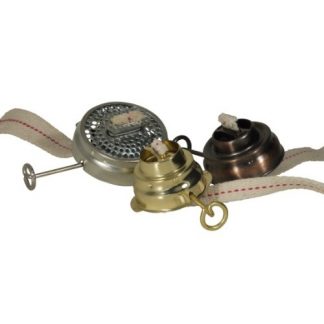
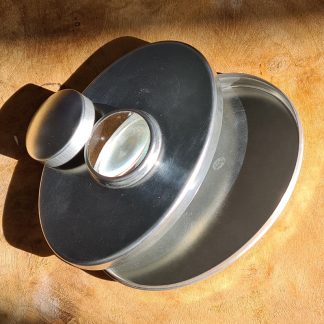
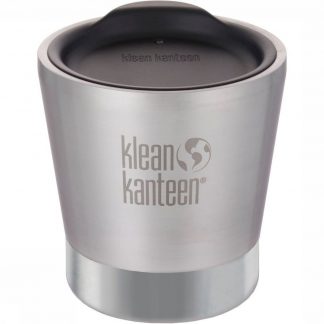
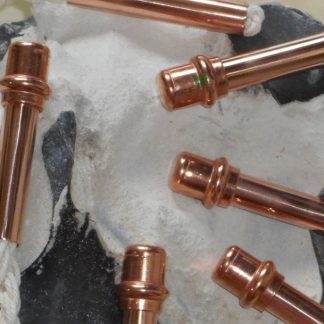
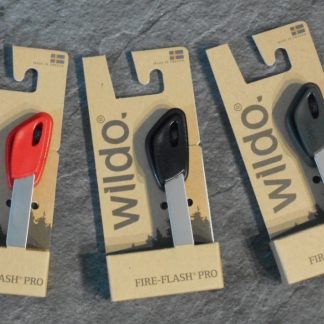
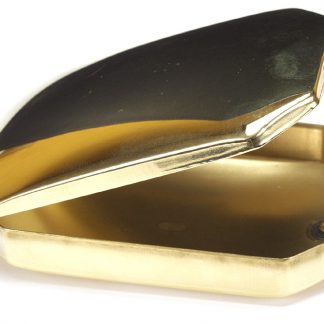
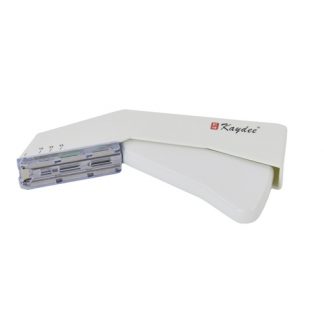
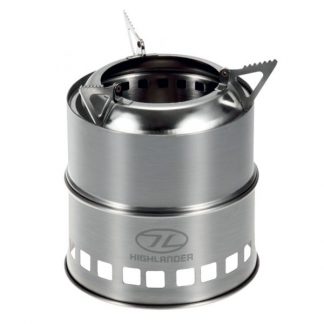
Beoordelingen
Er zijn nog geen beoordelingen.